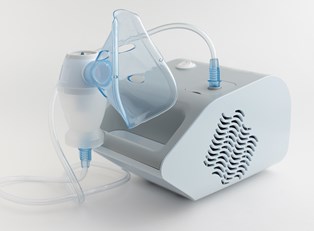Inhalers are portable medical devices that are used for delivering a dose of medication into your lungs. If you are sick with a respiratory infection or have been diagnosed with a chronic respiratory disease such as asthma, you may be prescribed inhaled medications. The benefit of inhalants is that they reach your airways and lungs much quicker than if you swallowed the same drug in pill form, and the side effects are fewer too. There are two main devices used for taking inhaled medications: inhalers and nebulizers.
An internet search for inhalers will produce a vast assortment of brand names, shapes, sizes, and colors. It may seem that there are several different kinds of inhalers. Furthermore, you may also hear people refer to one device as a rescue inhaler and another as a prevention inhaler—these terms refer to the medications—not necessarily to the device itself. Actually, inhalers fall under just two main types and these are explained below:
Metered-dose inhaler (MDI)
The Federal Drug Administration has estimated that more than 25 million Americans use metered-dose inhalers. It is by far the most commonly used inhaler because of its portability and affordability.
The MDI is composed of two main parts that work together. The first component is an L-shaped plastic holder, which easily fits in one hand. The plastic part is also the mouthpiece. The second part is a pressurized canister that contains an aerosol-formulated medication and a metering device that ensures the accurate release of a single dose of medication when the canister is depressed into the holder.
MDIs require a considerable amount of coordination and often children and the elderly have difficulty timing inhaling with activating the inhaler. An MDI contains about 200 doses of medication, and a growing number are designed with counters to keep track of how many "puffs" are remaining.
Dry powder inhaler (DPI)
One benefit of dry powder inhalers is that they do not require the amount of coordination that MDIs do. Though they are easier to operate, DPIs rely on your ability to inhale quickly and deeply. One drawback to using DPIs is that many patients, especially when short of breath, do not have the lung capacity needed to get an effective dose of the medication.
Like MDIs, DPIs are also made of plastic and fit in one hand. They may be pre-installed with medicine, or you may have to load each dose yourself. Loading a dose is easy and usually involves placing a capsule into a compartment and then puncturing it with a click or a twist of the device. DPIs are susceptible to humidity and must be stored in dry places. They should not be washed with water.
Conditions Treated by Inhalers
Inhalers are most commonly associated with treating asthma, which is a condition marked by airway inflammation and excess mucus production. These symptoms make it difficult for patients to breathe and can lead to bouts of wheezing or coughing. When it comes to treating asthma, inhalers serve two primary purposes—long-term treatment of the condition and emergency relief from symptoms. Most patients will own one inhaler containing corticosteroids that’s used on a daily basis, and this device functions to lower their overall risk of having asthma attacks. However, they typically own a second “rescue” inhaler that’s used in the event of an attack or before they perform as strenuous activity such as exercise. These inhalers normally contain fast-acting beta agonists or ipratropium.
However, inhalers aren’t just used to treat asthma—they’re also a commonly used by patients suffering from chronic obstructive pulmonary disorder, or COPD, as well. Both long-term and rescue devices are used, but doctors may also recommend an inhaler to administer steroids if a person’s condition is particularly severe or in its late stages.
In some cases, inhalers may be necessary for cases of bronchitis too. However, these are typically only used for emergency situations, and use can be discontinued once a patient’s symptoms improve.




